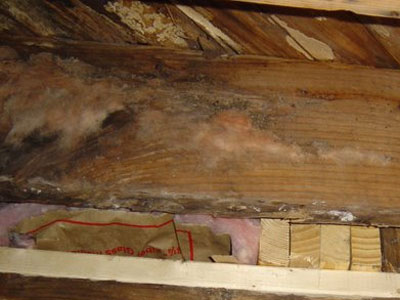Floor Joist With Mold

That's right, mold can grow on your
installation and floor joist. This usually happens underneath a
bathroom, kitchen, laundry room or any area of the home where a plumbing
pipe could be damaged or leaking.
This could also be a problem in an entryway or area of the home where
you enter frequently during wet conditions. If you live in a climate
where it rains and snow's often, you know what I'm talking about. The
floors in these rooms can stay moist for long periods of time.
Do your best to keep these areas dry or as dry as possible, during these
wet weather conditions.
This damage was caused from a bathroom sink that was leaking for a
while. You should always check under the sinks for water leaks, make it
a point to check under your sinks, at least once a month but preferably
once a week.
This might sound time-consuming but if you clean once a week, simply
store your cleaning supplies in these areas and give it a quick glance,
every time you clean and soon you will be doing this without even
thinking.
If you have a small leak, it could get larger and it normally does. Try
to have even a small leaks fixed as soon as possible.
The mold is not only affecting the wood framing members but has also
affected the installation and drywall. The wood will need to be treated
with chlorine or bleach and the insulation will need to be replaced for
this home repair.
Make sure that the wood framing is dry and mold free, or at the least,
make sure that you have removed all of the mold that is visible.
Usually, when the moisture is gone, the mold won't be as big of a
threat.
